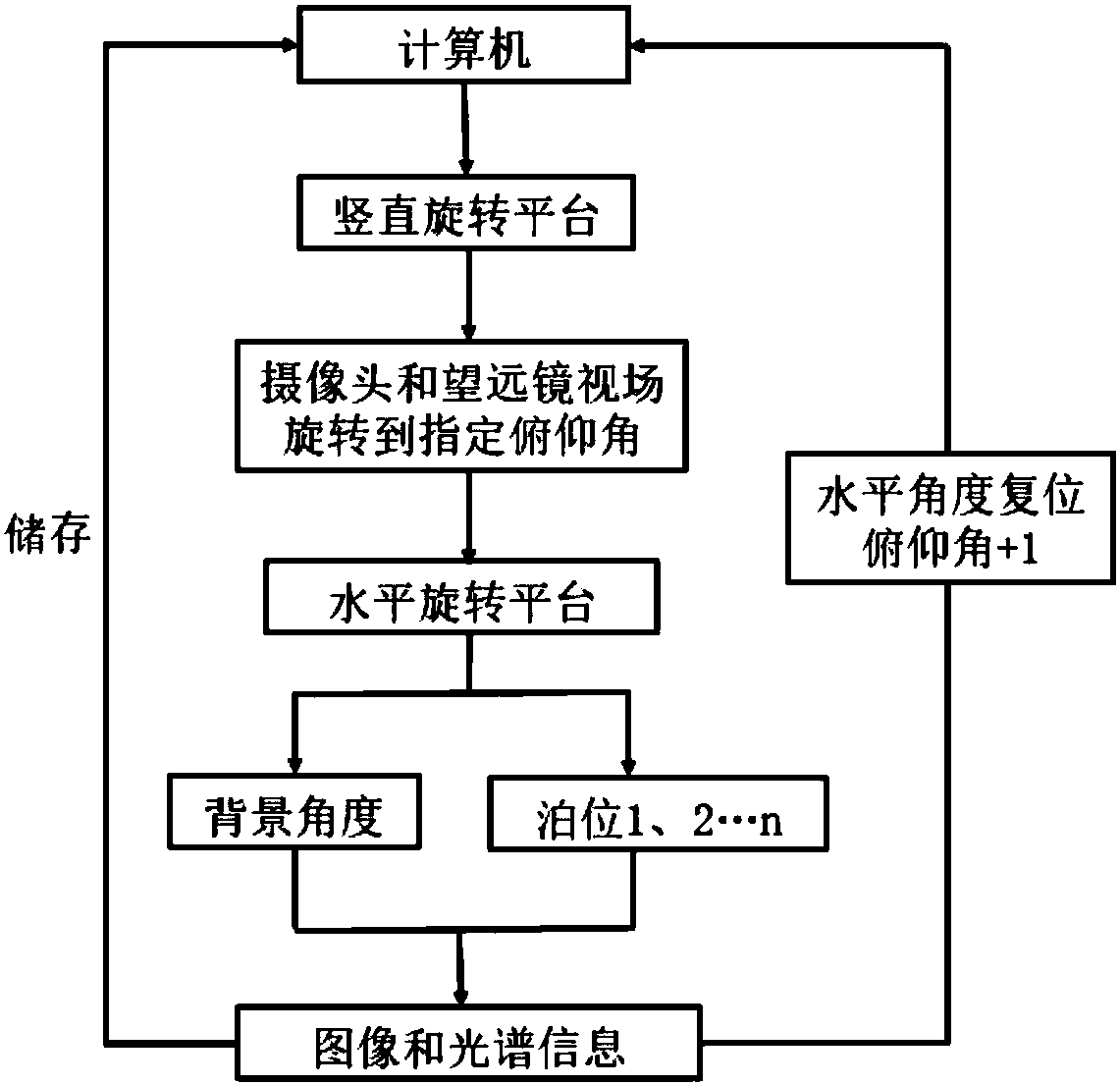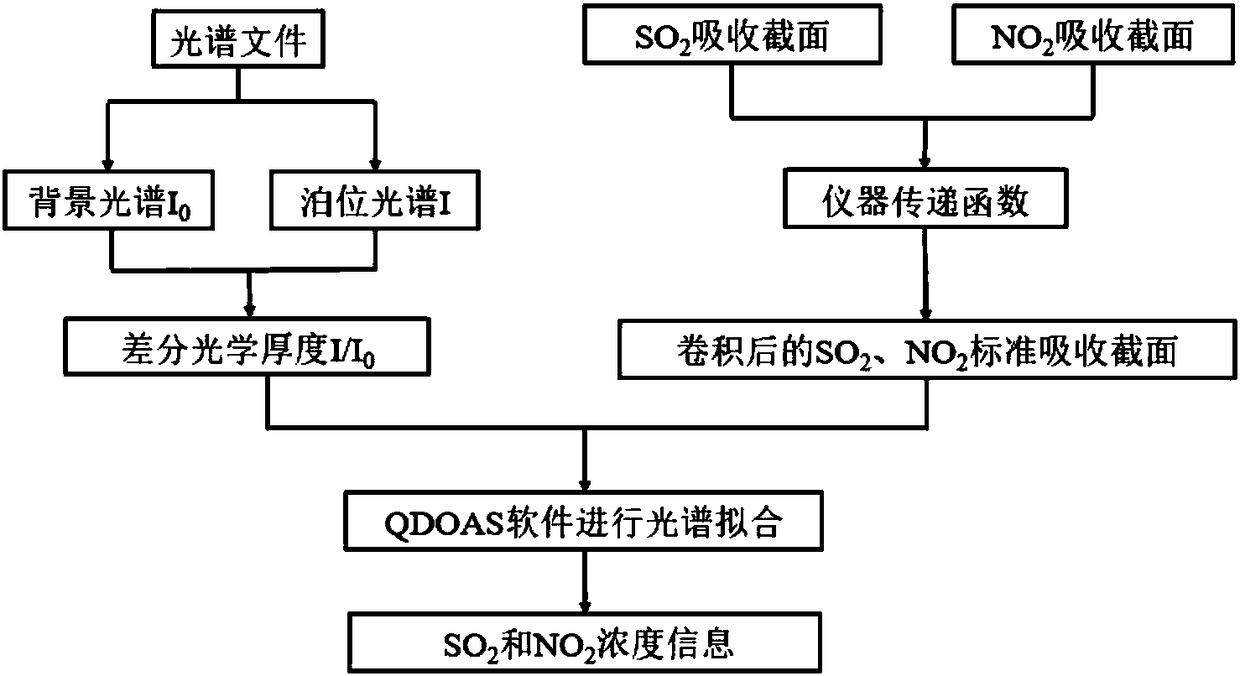Passive remote sensing technique-based monitoring system and method of tail gas of ships at plurality of berths in harbour
A monitoring system and passive remote sensing technology, which is applied in the field of optical measurement, can solve the problems of cumbersome methods for ship pollutants, inability to represent the average value, poor effect, etc., and achieve the effects of stable working temperature, reduced interference, and improved signal-to-noise ratio
- Summary
- Abstract
- Description
- Claims
- Application Information
AI Technical Summary
Problems solved by technology
Method used
Image
Examples
Embodiment Construction
[0024] Such as figure 1 As shown, the telescope and the camera move coaxially, the horizontal rotating platform is controlled by the computer to rotate to any angle, the rotation range is 0 to 360 degrees, the vertical rotating platform can rotate from 0 to 90 degrees, and the minimum rotation angle is 0.005 degrees, which can Rotate to preset angles precisely and quickly. The telescope and camera are calibrated so that they correspond to the same field of view.
[0025] According to the actual situation on site, including the corresponding angle of the berth, the height of the chimney of the ship, the area without ship pollution, etc., set the horizontal angle and vertical angle range of the scan.
[0026] Such as figure 1 As shown, the device of the present invention measures the tail gas of ships docked at multiple berths in the port 1. The vertical rotating platform 2 and the horizontal rotating platform 3 are connected to the computer 6 through the control line 11, an...
PUM
 Login to View More
Login to View More Abstract
Description
Claims
Application Information
 Login to View More
Login to View More - R&D
- Intellectual Property
- Life Sciences
- Materials
- Tech Scout
- Unparalleled Data Quality
- Higher Quality Content
- 60% Fewer Hallucinations
Browse by: Latest US Patents, China's latest patents, Technical Efficacy Thesaurus, Application Domain, Technology Topic, Popular Technical Reports.
© 2025 PatSnap. All rights reserved.Legal|Privacy policy|Modern Slavery Act Transparency Statement|Sitemap|About US| Contact US: help@patsnap.com



